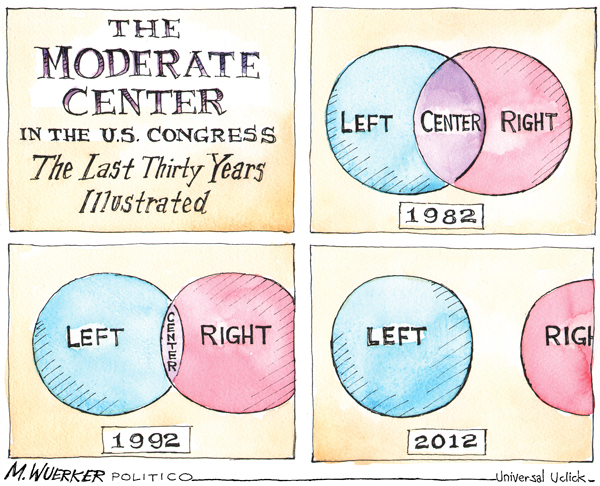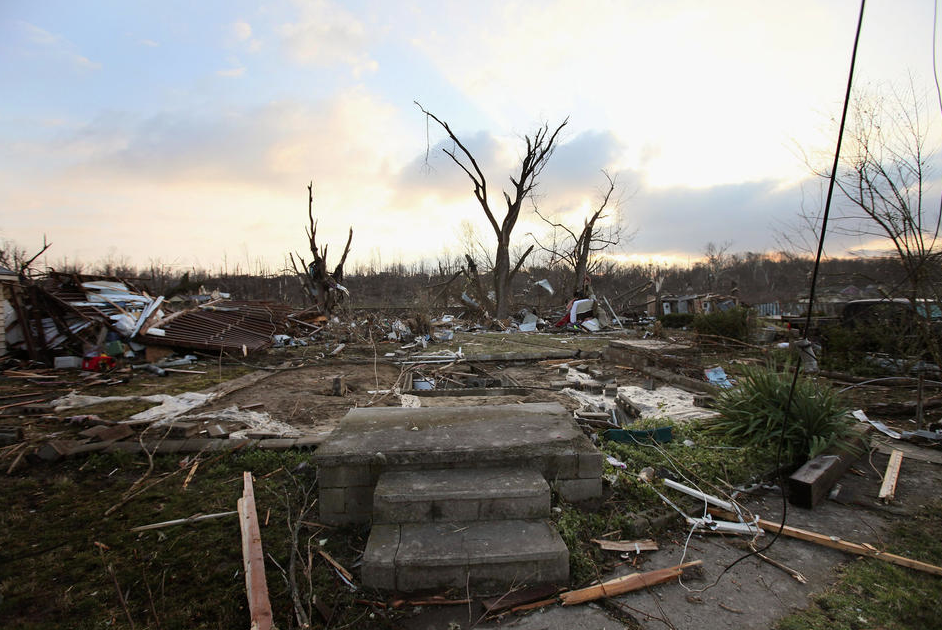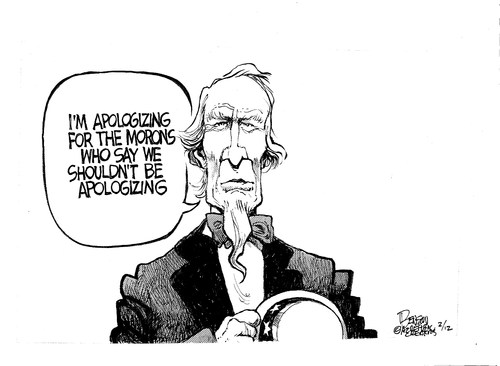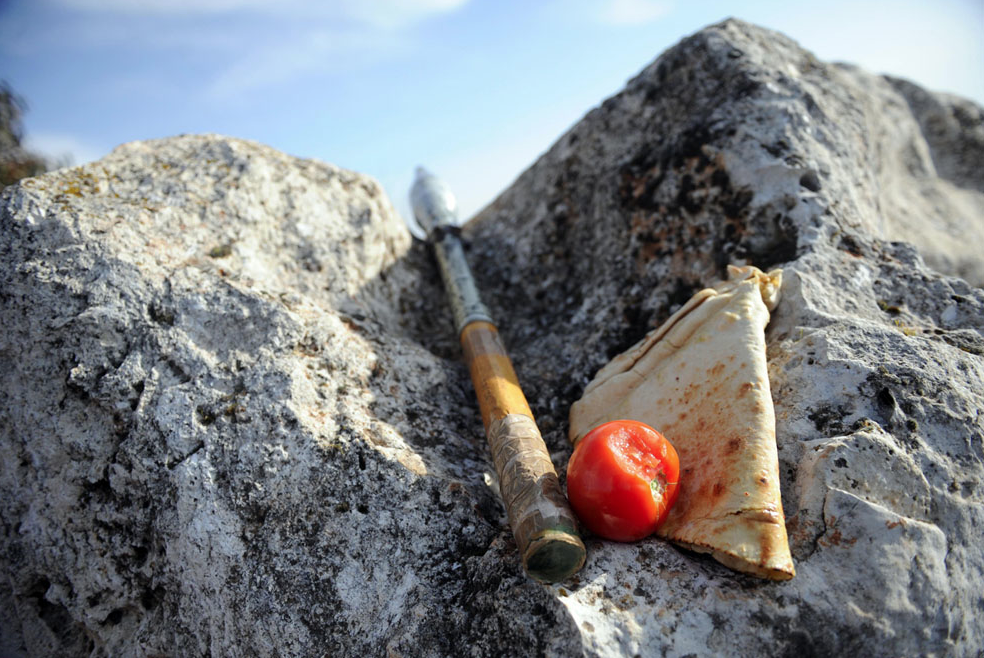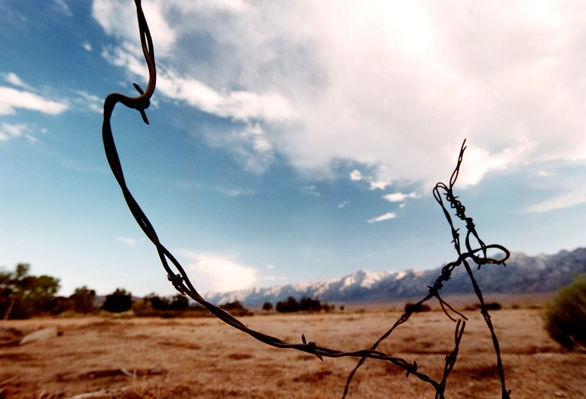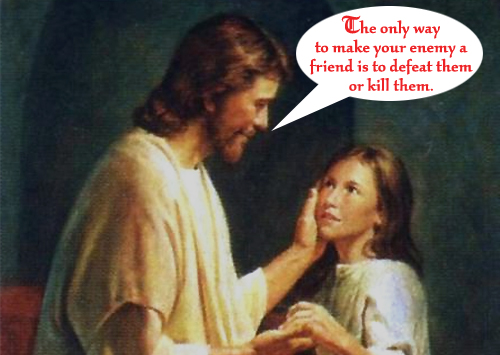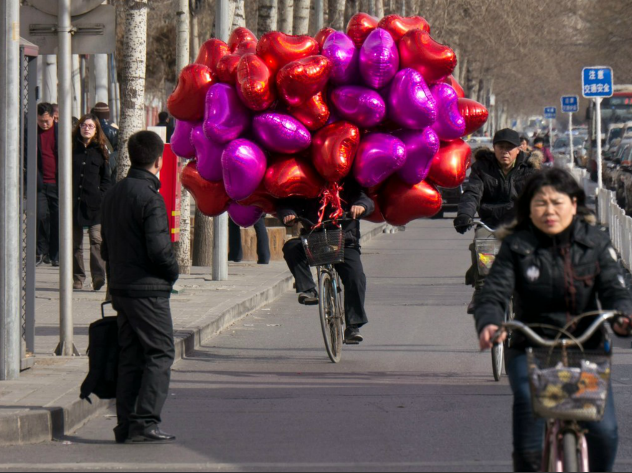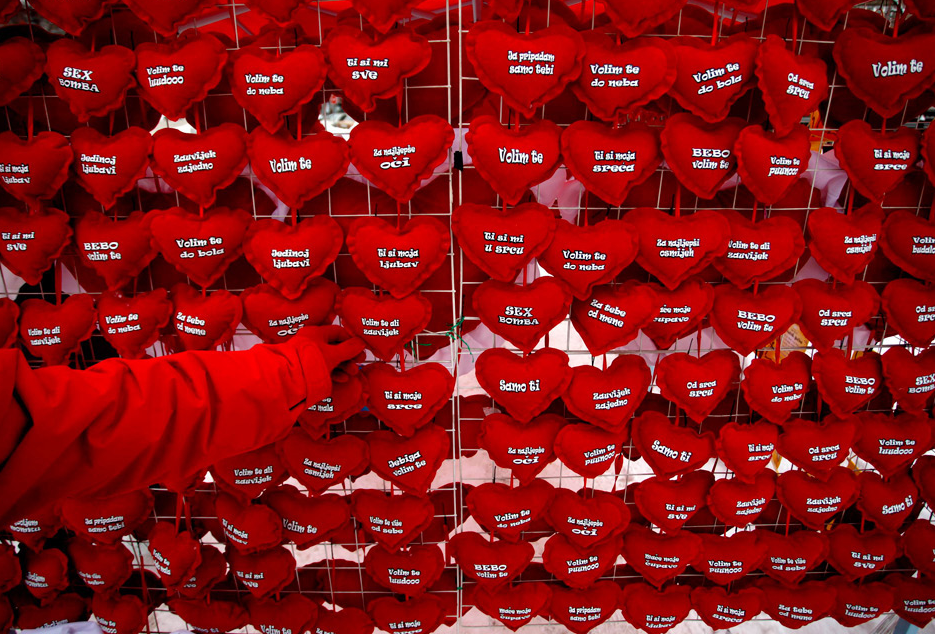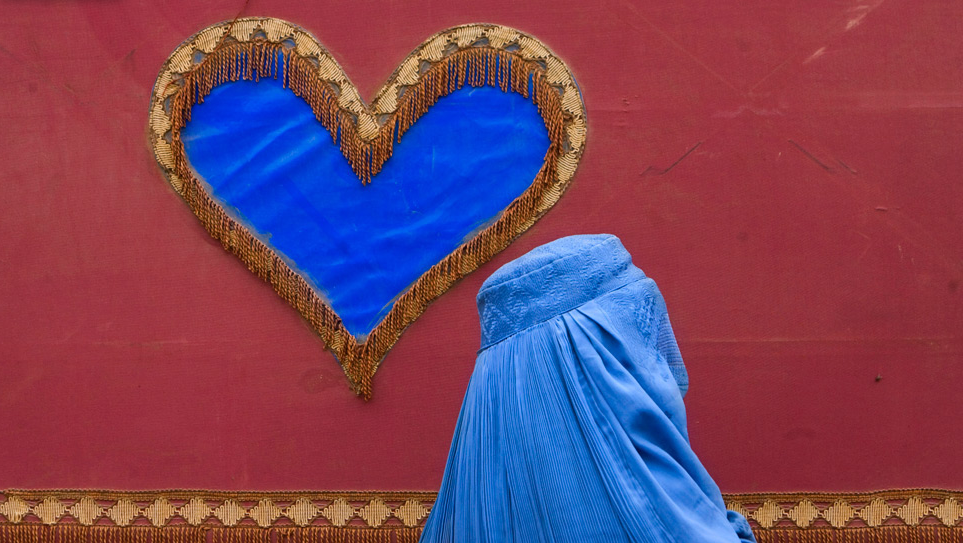
Here it is the beginning of February and the temperature in Indiana has been hovering in the mid-40s and low-50s. Last week one day it was in the mid-60s. Walking around campus has been a sheer delight, and a far cry from the typical weather one experiences in Indiana in the winter months. I don’t know what the temperature was when this picture was taken last week in New York’s Central Park, but this is surely not the picture of “love in bloom” we might expect to see at this time of the year with couples skating in Rockefeller Center or maybe making snow angels on the Central Park lawn—or snow plows trying to figure out how to navigate around parked cars on otherwise deserted Manhattan streets. And so the question is, what’s the problem with global warming, anyway?
Of course, we might not be so sanguine if we lived in Europe where an otherwise mild winter has turned abruptly to historically aberrant and excessively frigid temperatures as low as minus 40 degrees Fahrenheit in many places.
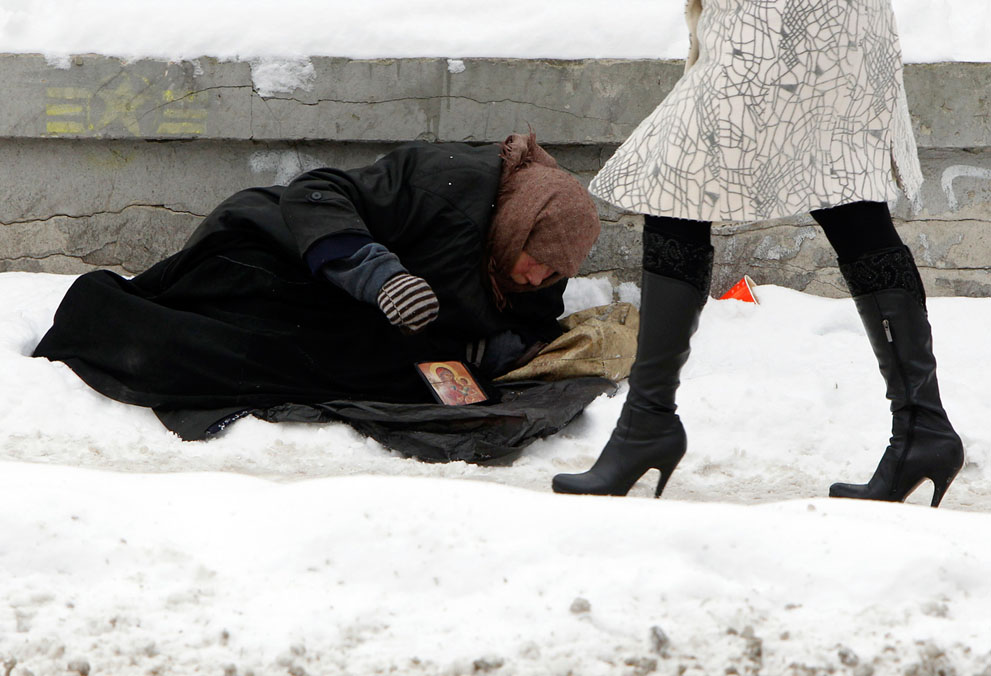
The scene above is from Kiev where the temperature is 8 degrees Fahrenheit, but the blowing wind no doubt makes it much colder than that. And here, of course, we see at least part of the problem, for while the weather can be the background for a romantic liaison, it can also accent the effects of social and economic distance. The woman walking has perhaps been inconvenienced by the frigid temperatures, but not so much that it has kept her from making her way down the street in stylish, high-heeled leather boots. And judging from her stride it doesn’t seem as if she has noticed the prostrate woman laying in the snow and begging for alms or that she plans on slowing down or stopping. And when she finally gets home it is altogether likely that her flat or house will be appropriately warm. The woman on the ground, on the other hand, is bundled in mismatched clothing and protected from the snow beneath her by what appears to be a plastic bag. In all likelihood she is homeless. And like so many of the poor and homeless, wherever she sleeps this evening her “inconvenience” will be much more acute, resulting in debilitating frostbite or even death. The numbers are hard to calculate, but even the most conservative estimates indicate that over 300 Europeans have died in the past two weeks due to exposure.
None of this proves manmade global warming, of course, but the conditions documented by these photographs surely corroborate the growing consensus to that effect of virtually every scientific organization that has studied weather patterns and climate change, including the National Academy of Science and the Union of Concerned Scientists. And more, they gesture to at least one of the moral implications of our failure to preserve a sustainable environment, for surely it is the homeless and impoverished who will bear the initial brunt of the floods and draughts that are all but inevitable future effects of our current environmental practices and policies.
As I ponder these photographs it leaves me altogether amazed that serious candidates for the presidency can conclude that climate change is the result of “a substantial number of scientists who have manipulated data so that they will have dollars rolling into their projects” or that global warming is a “hoax.” Then again, it was barely less than a year ago that the Republican members of the U.S. House Energy and Commerce Committee voted down an amendment to a bill that called for Congress to accept the scientific consensus that “climate change is occurring, it is caused in large part by human activity and it is a threat to human health” on a 20-31 party-line vote.”
And so, back to the question: What’s the problem with global warming, anyway? And the answer has to be that the problem is that we seem determined to decide such matters on party line votes that systematically (and quite proudly) ignore the scientific facts. And more, we forget that the spring-like conditions of a romantic liaison in the park during the dead of winter will have its costs, if not now, soon, and they will point to even deeper problems and contradictions within our collective lives.
Photo Credits: Lucas Jackson/Reuters; Gleb Garanich/Reuters
4 Comments
